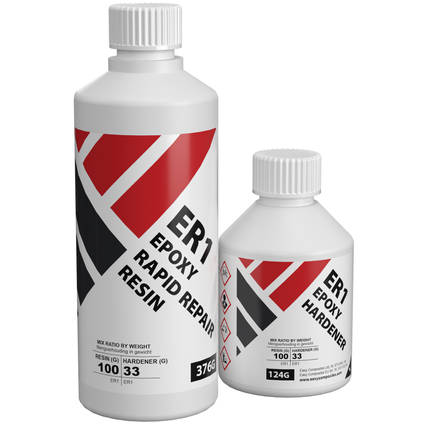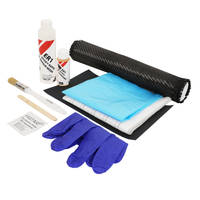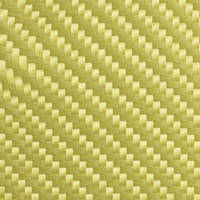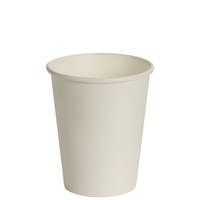Need any help or advice?+44 (0)1782 454499
Downloads (3)
This is a chemical product. Before storage or use you must download and read the accompanying safety and technical datasheets.
| Dutch Safety DataSheet | ||
| Safety Datasheet (SDS) | ||
| Technical Datasheet (TDS) |
Specification
Product Data
| Colour | Clear | |
|---|---|---|
| Shelf Life | 12 | Months |
| Chemistry / Material | Epoxy | |
| Viscosity | 1000 | mPa.s |
| UV Resistance | Moderate | |
| Brand | Easy Composites |
Cured Mechanical Properties
| Max Service Temp | 82 | °C |
|---|---|---|
| Hardness | 87 (Hard) | Shore D |
| Flexibility | Hard / Rigid | |
| Tensile Strength | 40 - 46 | MPa |
| Flexural Strength | 95 - 105 | MPa |
| Flexural Modulus | 2.3 - 2.7 | GPa |
| Elongation at Break | 2.0 - 4.0 | % |
| Tg Onset (DMA) | 80 - 84 | °C |
Pot Life and Cure Times
| Pot Life (Typical) | 8 | mins |
|---|---|---|
| Initial Cure Time | 6 | Hrs |
General Properties
| Gross Weight | 0.61 | kg |
|---|
Shipping Information
Restrictions
In the currently selected pack size, this product is classed as dangerous goods in limited quantity for the purposes of transport.
Shipping is possible to all UK addresses, including the Channel Islands, without restriction. However, due to being classed as 'dangerous goods', delivery times are not guaranteed on any delivery service.
Shipping to EU countries is now done through our European subsidiary based in the Netherlands. All EU customers should use www.easycomposites.eu.
To check availability of shipping to any other country, add the item to your basket and use the shipping calculator on the basket page.
For a full information regarding the shipment of dangerous goods to all destinations, see our delivery information page.
Package Size
There are no package size restrictions or surcharges for this product.
Delivery Cost
To find the availability and cost for delivery of this item to your address, add it to your basket and then use the instant shipping calculator on the basket page.
ER1 Epoxy Rapid Repair Resin
- EP-RR-05
Hazardous
- No reviews
Our ER1 Epoxy Rapid Repair Resin is a fast curing, high performance epoxy laminating ideal for repairs to carbon or glass fibre boats, vehicle panels and more. The resin was developed for maximum bond strength and flexural strength, combined with a fast cure making it suitable for both emergency trackside/waterside repairs and for non emergency workshop repairs.
Sold as a kit (resin and hardener). Available to buy online in 500g, 1kg and 5kg kits.
PRODUCT VERSIONS
Kit Size
AVAILABILITY:More than 10 availablefor immediate shipping
We won’t be beaten on price!
If you believe you’re buying an equivalent product cheaper elsewhere, contact us to discuss your requirements.
This ER1 Epoxy Rapid Repair Resin was developed in conjunction with a major Formula 1 team in order to meet their demand for an epoxy repair resin that could be used 'track-side' on testing days. The requirement was for a resin that cures relatively quickly and results in a composite with high flexural strength.
The resulting resin is a high performance epoxy that cures in 6hrs (at 25°C) perfect for trackside, waterside or even at the airstrip repairs to damaged composite components including carbon fibre, Kevlar and glass fibre parts.
Typical Uses
Use this ER1 Epoxy Rapid Repair Resin to patch up damage vehicle body panels, repair damage to large and small boat hulls, reinforce fractured or cracked carbon fibre or fibreglass poles or just about any other composite part.
Further Information
Rapid Repair Kit Top-Ups
This is the resin that is used in our Carbon Fibre Rapid Repair kit. If you're wanting to make your own larger version of one of our kits then this is the resin you need.
Compatibility Information - Dos and Don'ts
Although by no means an exhaustive list, the mould materials, pigments and additives listed below have all been tested and are known to work well with Epoxy Rapid Repair.
Compatible Moulds
- Uni-Mould Mould System
- Epoxy Tooling Gelcoat
- Epoxy gelcoat based moulds
- Polypropylene and polyethylene sheet
- Aluminium
- Toughened Glass (eg. flat sheet manufacture)
Compatible Pigments
- Epoxy Colour Pigment * (for vivid opaque colours)
- Translucent Tinting Pigment * (for less vivid opaque colours)
Compatible Fillers
- All dry filler powders
* With bold coloured laminates such as carbon fibre, the underlying colour of the fabric may still show through the pigmented resin, especially with thinner layers of resin over the underlying laminate.
Key Processing Information
- Ease of Use: Suitable for professional and hobby use (follow SDS advice).
- Odour: Epoxy Rapid Repair Resin is almost odourless.
- Safety Precautions: Wear gloves and goggles and work in a well ventilated area. Always read the SDS before use.
- Ambient Conditions: Can be used from 15 to 30°C although pot-life and cure time will be affected significantly. Recommended working at an ambient of 20-25°C.
- Degassing: Not necessary in most cases. Simply mix and use.
- Mix Ratio: Mix 'Resin' and 'Hardener' 100:33 by weight. Use digital scales
- Mixing: Mix thoroughly by hand for at around 2 minutes.
- Pot-Life: 10-13mins. Be sure to use your resin before this time.
- Exotherm (Over-Heating): Resin will heat-up whilst it cures. Mix in small batches and use expediently. Mixed resin in a pot will quickly overheat (exotherm) and can smoke/ignite. Never leave mixed resin unattended.
- Cure Time/Demould: At 25°C you can expect a typical cure time to be 6 hours.
- Pigments and Fillers: A wide range of pigments and fillers can be added to change the properties and appearance of Resin.
This ER1 Epoxy Rapid Repair Resin was developed in conjunction with a major Formula 1 team in order to meet their demand for an epoxy repair resin that could be used 'track-side' on testing days. The requirement was for a resin that cures relatively quickly and results in a composite with high flexural strength.
The resulting resin is a high performance epoxy that cures in 6hrs (at 25°C) perfect for trackside, waterside or even at the airstrip repairs to damaged composite components including carbon fibre, Kevlar and glass fibre parts.
Typical Uses
Use this ER1 Epoxy Rapid Repair Resin to patch up damage vehicle body panels, repair damage to large and small boat hulls, reinforce fractured or cracked carbon fibre or fibreglass poles or just about any other composite part.
Further Information
Rapid Repair Kit Top-Ups
This is the resin that is used in our Carbon Fibre Rapid Repair kit. If you're wanting to make your own larger version of one of our kits then this is the resin you need.
Compatibility Information - Dos and Don'ts
Although by no means an exhaustive list, the mould materials, pigments and additives listed below have all been tested and are known to work well with Epoxy Rapid Repair.
Compatible Moulds
- Uni-Mould Mould System
- Epoxy Tooling Gelcoat
- Epoxy gelcoat based moulds
- Polypropylene and polyethylene sheet
- Aluminium
- Toughened Glass (eg. flat sheet manufacture)
Compatible Pigments
- Epoxy Colour Pigment * (for vivid opaque colours)
- Translucent Tinting Pigment * (for less vivid opaque colours)
Compatible Fillers
- All dry filler powders
* With bold coloured laminates such as carbon fibre, the underlying colour of the fabric may still show through the pigmented resin, especially with thinner layers of resin over the underlying laminate.
Key Processing Information
- Ease of Use: Suitable for professional and hobby use (follow SDS advice).
- Odour: Epoxy Rapid Repair Resin is almost odourless.
- Safety Precautions: Wear gloves and goggles and work in a well ventilated area. Always read the SDS before use.
- Ambient Conditions: Can be used from 15 to 30°C although pot-life and cure time will be affected significantly. Recommended working at an ambient of 20-25°C.
- Degassing: Not necessary in most cases. Simply mix and use.
- Mix Ratio: Mix 'Resin' and 'Hardener' 100:33 by weight. Use digital scales
- Mixing: Mix thoroughly by hand for at around 2 minutes.
- Pot-Life: 10-13mins. Be sure to use your resin before this time.
- Exotherm (Over-Heating): Resin will heat-up whilst it cures. Mix in small batches and use expediently. Mixed resin in a pot will quickly overheat (exotherm) and can smoke/ignite. Never leave mixed resin unattended.
- Cure Time/Demould: At 25°C you can expect a typical cure time to be 6 hours.
- Pigments and Fillers: A wide range of pigments and fillers can be added to change the properties and appearance of Resin.
Specification
Product Data
| Colour | Clear | |
|---|---|---|
| Shelf Life | 12 | Months |
| Chemistry / Material | Epoxy | |
| Viscosity | 1000 | mPa.s |
| UV Resistance | Moderate | |
| Brand | Easy Composites |
Cured Mechanical Properties
| Max Service Temp | 82 | °C |
|---|---|---|
| Hardness | 87 (Hard) | Shore D |
| Flexibility | Hard / Rigid | |
| Tensile Strength | 40 - 46 | MPa |
| Flexural Strength | 95 - 105 | MPa |
| Flexural Modulus | 2.3 - 2.7 | GPa |
| Elongation at Break | 2.0 - 4.0 | % |
| Tg Onset (DMA) | 80 - 84 | °C |
Pot Life and Cure Times
| Pot Life (Typical) | 8 | mins |
|---|---|---|
| Initial Cure Time | 6 | Hrs |
General Properties
| Gross Weight | 0.61 | kg |
|---|
No, we wouldn’t suggest Epoxy Resins for lining a fuel tank. In general, epoxies have good resistance to petrol and many of the chemicals and additives found within pump fuel however the ethanol in fuel is known to cause problems over time and so specialist tank lining resins (often novalac vinylester based) should be used instead. One such product is GTS 1750 which is sold by Caswell Europe.
No, this epoxy in common with other epoxies does not attack expanded polystyrene
We have not specifically saught FDA (or similar) approval for this resin system so if you were to make these plates commercially then you would either need to make a plate using this resin system and then have it tested and approved safe for food use or use a different resin system that has specifically been approved for food use. Mixed and cured fully and properly the resulting plastic should be stable and non-toxic but testing would be required to prove this. Regarding being dishwasher safe; a dishwasher is a very harsh environment (abrasive, high temperatures, caustic) and so I think it would be quite hard on any resin system. By all means conduct your own tests but I would strongly recommend that a carbon fibre plate was not marketed as 'dishwasher safe'.
Although generally cured epoxies are non-hazardous, none of the products we have are certified food safe and thus we cannot recommend their use with food products.
We recommend Acetone. The brushes must be cleaned before the resin has cured. If you can’t get hold of acetone it’s also possible to use methylated spirits or neat alcohol.
In really simple terms you can think of 1kg of the Epoxy Resin as being 1L. If you want to be really exact (for example if you want to mix the resin and the hardener by volume and not by weight (which we don't recommend because it's unnecessarily complicated) then the relative density of the resin and the hardener, and the mixed product, can be found on the technical datasheet.
We can send any quantity of resin to Portugal. We would use a TNT Road service. To find the shipping cost for any item, simply add it to your basket and then click the 'Estimate Shipping' button on the basket page. The price will then be shown once you chose your shipping country (Portugal).
Unlike other resin systems such as polyester or vinylester, it's very important to get the mix ratios accurate with epoxies. If you get the mix ratio wrong by a small amount (let's say a couple of grams on a small mix) then the resin will still cure but the mechanical properties won't be quite as good as they would have been if the mix ratio had been exactly right. However, if you were to be out by anything more than a few grams then you might find that the resin would not be properly hard when cured and/or may have a tackiness to the finish. This would result in a much weaker repair and needs to be avoided by careful measurements.
Above the HDT of a resin system it will soften slightly and its mechanical properties will start to fall away however a thermosetting plastic (like epoxy) is NOT a thermoformable plastic so it will not start to flow again such that you could melt it out of your part. It's more likely to become slightly soft and then possible more brittle again before eventually starting to burn if you too the temperature high enough. It sounds to me like you need a thermoformable plastic (aka a thermoplastic) with a relatively low melting point. I'd suggest something like PCL.
An elevated temperature post-cure is not required for parts made with epoxy resin however, post curing parts will improve the mechanical properties of the resin (and therefore the part) and so if you have the means to do it then it's certainly recommended. One major advantage to post-curing epoxy is that you will raise the HDT (heat distortion temperature) of the part meaning that it's less likely to soften or distort in higher temperatures. This can be particularly important for parts like a vehicle panel (i.e. hood/bonnet) which could get very hot in the sun. Without a post-cure there is a good chance that the part would effectively post-cure itself 'in situe' when it's in direct sunlight which can cause the resin to soften, sink and then re-harden. When this happens to a fitted part it's likely to distort the surface finish. A part that had been post-cured prior to installation would not have this problem.
Epoxy resins have very little odour and so it's quite viable to use them indoors (i.e. in your house) without upsetting anyone. The resin is almost completely odourless and the hardener has an amonia smell which doesn't really carry or linger.
In this respect epoxies are very different to polyester and vinylester resin which has a very strong smell and cannot realistically be used indoors. As always, you should still follow safety precautions and ensure adequate ventilation of your work area.
Uncured resins are classed as dangerous goods and would need to be disposed of correctly. For domestic users, usually your local council recycling centre will have a disposal service for such chemicals or containers.
Because cured resins are inert and safe for disposal it's often easiest to mix un-needed or out-of-date resin and hardener together to cure them. Once cured they can be disposed of with general waste.
Epoxy is sensitive to low temperatures so we would not attempt to try and cure the resin at very low temperatures such as below 15 °:C. At those temperatures, the cure time will be lengthened considerably.
One of the most significant problems caused by low temperatures (much below 20°C) is that the resin will be considerably thicker which affects its ability to self-degas after pouring.
Also, curing epoxies are hydroscopic so the low temperature environment may well leave the resin vulnerable to absorbing moisture, especially if the environment is relatively damp or high in humidity as can be found in some outdoor workshops or home garages.
As a result, for best results we always recommend working in an environment that is 20°C or above.
The B stage of the cure is when the resin has cured enough to be firm but still tacky. When touching with a gloved finger, the resin should feel tacky but not leave any residue on the glove.
As with many post-cure cycles for resins, the post-cure cycle for our EL2 and IN2 Epoxy Resins is not too sensitive and a range of different post-cure cycles will produce good results, specifically improved mechanical performance and elevated HDT/operating temperature. Post-curing parts that will be used at or exposed to elevated operating temperatures (such as vehicle bonnets/hoods in direct sunlight, engine-bay parts, car interior parts etc.) is strongly recommended to prevent distortion of the parts when they are put into service and experience these higher temperatures.
Where possible, parts should be post-cured still inside the mould to reduce distortion and improve surface finish (i.e. reduce 'print-through'). When post-curing parts in the mould, it is important to post-cure them without demoulding at all (i.e. don’t demould and then put them back into the mould) otherwise you can get some strange patterns on the surface where some areas are post cured in direct contact with the mould surface and others are not.
A simple and very effective post-cure cycle with the IN2 Infusion Resin (or EL2 Epoxy Laminating Resin) is as follows:
CYCLE #1 SUITABLE FOR MOST SITUATIONS
- 24hrs at room temperature
- 6hrs at 60°C
If you’re encountering any surface finish issues (faint print-through) then you can experiment with a slower 'ramp rate' which sometimes improves things:
CYCLE #2 SUGGESTED FOR SUBTLE IMPROVEMENTS TO SURFACE FINISH
- 24hrs at room temperature
- 2hrs at 40°C
- 2hrs at 50°C
- 5hrs at 60°C
If you need to push the HDT of the finished part higher then you could increase post-cure up to a maximum of 80°C as follows:
CYCLE #3 SUGGESTED FOR HIGHEST POSSIBLE HDT/OPERATING TEMPERATURE
- 24hrs at room temperature
- 2hrs at 40°C
- 2hrs at 50°C
- 2hrs at 60°C
- 2hrs at 70°C
- 4hrs at 80°C
These are all just suggestions. Most situations just call for option #1; 6hrs at 60°C. Many customers also find that they can dispense with the 24hrs cure at ambient and simply load newly infused parts into the oven to begin the cure however this is something that you would need to experiment with yourself. A cure at ambient temperature before post-cure is generally favoured with most resin systems.
Yes, but it's highly recommended to use specialist 'powder bound' chopped strand matt. This is because conventional chopped strand matt is 'emulsion bound' which relies on styrene and solvents in the resin to break the binding down. Epoxy does not have these solvents. As a result, specialist 'powder bound' chopped strand matt is needed as the powder binding is broken down by the liquid itself.
Most cured epoxy resins have self-extinguishing properties however none of our epoxies have formal 'fire rating' data because they're not designed as intumescent or fire retardant resins. The reinforcement you use will also have an impact on the fire retardancy of the finished product.
If you're specifically setting out to make fire-retardant parts I would suggest using a specialist intumescent resin - however, bear in mind that generally these resins will contain inert fillers which compromise their mechanical performance to some extent.
It would be OK but I think it's probably overkill. For a small to medium sized repair I would suggest our EL2 Epoxy Laminating Resin (choose the FAST hardener) which could be mixed and poured into the crack, it's not as expensive as the Rapid Repair Resin but will still bond well, cure clear and give you a long-lasting repair.
Most exhaust pipe temperatures are too high for using this resin. Ideally you need to measure how hot it can get in typical use. If it stays below 160°C then we would recommend using our EL160 High Temp Epoxy Laminating Resin as, with a post cure, it can go to 160°C.
Our Rapid Repair Resin cures fairly clear although does have a very slight amber tinge. It looks clear when used as the matrix in a laminate (carbon fibre for example). As a structural resin (and not a cosmetic one) the resin could potentially also be subject to some yellowing or discolouration over time.
Our Epoxy Rapid Repair Resin is a medium to low viscosity resin and as such has no thixotropic additives in it. When painted on a vertical surface, excessively thick layers will run. If you need to make the resin more thixotropic for a specific application then you can add Fumed Silica Thixotropic Powder to achieve this.
ASK YOUR OWN QUESTION
Customer Product Reviews for ER1 Epoxy Rapid Repair Resin
SUBMIT YOUR OWN PRODUCT REVIEW
We publish all reviews for verified purchases. Submit your own review and help other customers with their choices.SUBMIT YOUR OWN PRODUCT REVIEW
We publish all reviews for verified purchases. Submit your own review and help other customers with their choices.Shipping Information
Restrictions
In the currently selected pack size, this product is classed as dangerous goods in limited quantity for the purposes of transport.
Shipping is possible to all UK addresses, including the Channel Islands, without restriction. However, due to being classed as 'dangerous goods', delivery times are not guaranteed on any delivery service.
Shipping to EU countries is now done through our European subsidiary based in the Netherlands. All EU customers should use www.easycomposites.eu.
To check availability of shipping to any other country, add the item to your basket and use the shipping calculator on the basket page.
For a full information regarding the shipment of dangerous goods to all destinations, see our delivery information page.
Package Size
There are no package size restrictions or surcharges for this product.
Delivery Cost
To find the availability and cost for delivery of this item to your address, add it to your basket and then use the instant shipping calculator on the basket page.
RELATED PRODUCTS
CUSTOMERS ALSO PURCHASED
RELATED PRODUCTS
CUSTOMERS ALSO PURCHASED
100% SECURE
PAYMENT METHODS


Easy Composites Ltd, registered in England 7486797. All content copyright (C) Easy Composites Ltd, 2025. All rights reserved.




